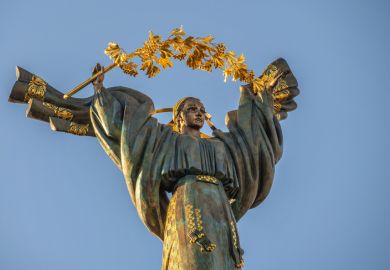Twentieth-century astronomy in the United States acquired world leadership thanks to the pool of experts in celestial mechanics, astrometry, photographic photometry and spectroscopy that gained access to the great telescopes at Yerkes, MacDonald, Mount Wilson, Palomar and Mount Hamilton. Key personalities were Simon Newcomb, Lewis Boss, Edward Pickering and George Ellery Hale, who were able to enthuse business tycoons of the age. By 1920, the opening year of Ronald Doel's book, modern American stellar astronomy had an impressive record. But the solar system had not shared in the attention; if anything the reports of canals on Mars, though exciting to the public, had turned astronomers away from planets and their satellites.
Asteroids, the solar constant, planetary chemistry, comets, lunar craters and big science roughly characterise the six chapters in which Doel relates how the solar system community arose and developed from 1920 to the beginning of the space age, each chapter telling of the storm before the calm by reference to the clashing views of the principal actors. The benign mantle of the captains of industry was assumed by the Office of Naval Research and, later, the National Science Foundation.
The book's concentration on the participants and their interactions reveals that intermarriage between astronomy and nonastronomical disciplines led to repeated clashes that are surely relevant to understanding developing scientific culture in other fields where cross-fertilisation is taking place. Chemistry, which impinged on astronomers at the eclipse of 1868, was discomforting, but at least J. N. Lockyer was an astronomer, not a chemist; spectral lines became a part of astrophysics. Later when chemist Harold Urey, author of The Planets, started telling astronomers about the chemical composition of the moon and planets, there was resistance, illustrated in part by his less-than-smooth interaction with Gerard Kuiper, founder of the Lunar and Planetary Laboratory in Tucson. Other players were Smithsonian astronomer Fred Whipple and Chicago physicist Harrison Brown, while Whipple and the Harvard astrophysicist Donald Menzel also rocked the boat by their advocacy of rocketry, a technique to be exploited by physicist J. Van Allen. The volcanic origin of lunar craters, favoured by astronomers, was put to rest in 1949 by Ralph Belknap Baldwin in The Face of the Moon, a convincing book that adduced wartime statistics on bomb craters. Other foreign techniques were introduced by radiophysicists: J. H. Piddington and H.C. Minnett needed a lunar dust surface to account for their 1949 microwave light curve; microwaves also revealed, to J.A. Roberts and Radhakrishnan, the magnetic field of Jupiter. J. M. Pettengill and J. V. Evans found the rotation period of Mercury by radar, while V. R. Eshleman assayed the Martian atmosphere with bistatic radar.
Further exotic background was imported into planetary studies by geologist Eugene Shoemaker, while engineer-by-training Tom Gold reasoned that lunar particles blown up by countless micrometeorite impacts could become ionised by solar ultraviolet and, on return, could influence land forms through electrostatic effects. In his Cornell laboratory he simulated fairy-castle microstructures, later photographed on the moon by an astronaut using Gold's camera-on-a-stick. Lunar dust contaminated the astronauts' clothing, alarmingly endangered the plug and socket connectors of their oxygen supply, and accounts for the low velocity of lunar seismic waves. American hard-rock geologists to this day have trouble accommodating Gold's cross-cultural intrusions, including his idea that bacteria have mediated bulk mineral deposits. Even so, the black stuff of Halley's comet is a sign, and re-exploring Mars is now being discussed in terms of rock-eating bacteria. Biology will administer astronomy's next culture shock.
Ronald N. Bracewell is emeritus professor of electrical engineering, Stanford University, California.
Solar System Astronomy in America: Communities, Patronage and Interdisciplinary Science 1920-1960
Author - Ronald E. Doel
ISBN - 0 521 41573 X
Publisher - Cambridge University Press
Price - £40.00
Pages - 280
Register to continue
Why register?
- Registration is free and only takes a moment
- Once registered, you can read 3 articles a month
- Sign up for our newsletter
Subscribe
Or subscribe for unlimited access to:
- Unlimited access to news, views, insights & reviews
- Digital editions
- Digital access to THE’s university and college rankings analysis
Already registered or a current subscriber? Login



